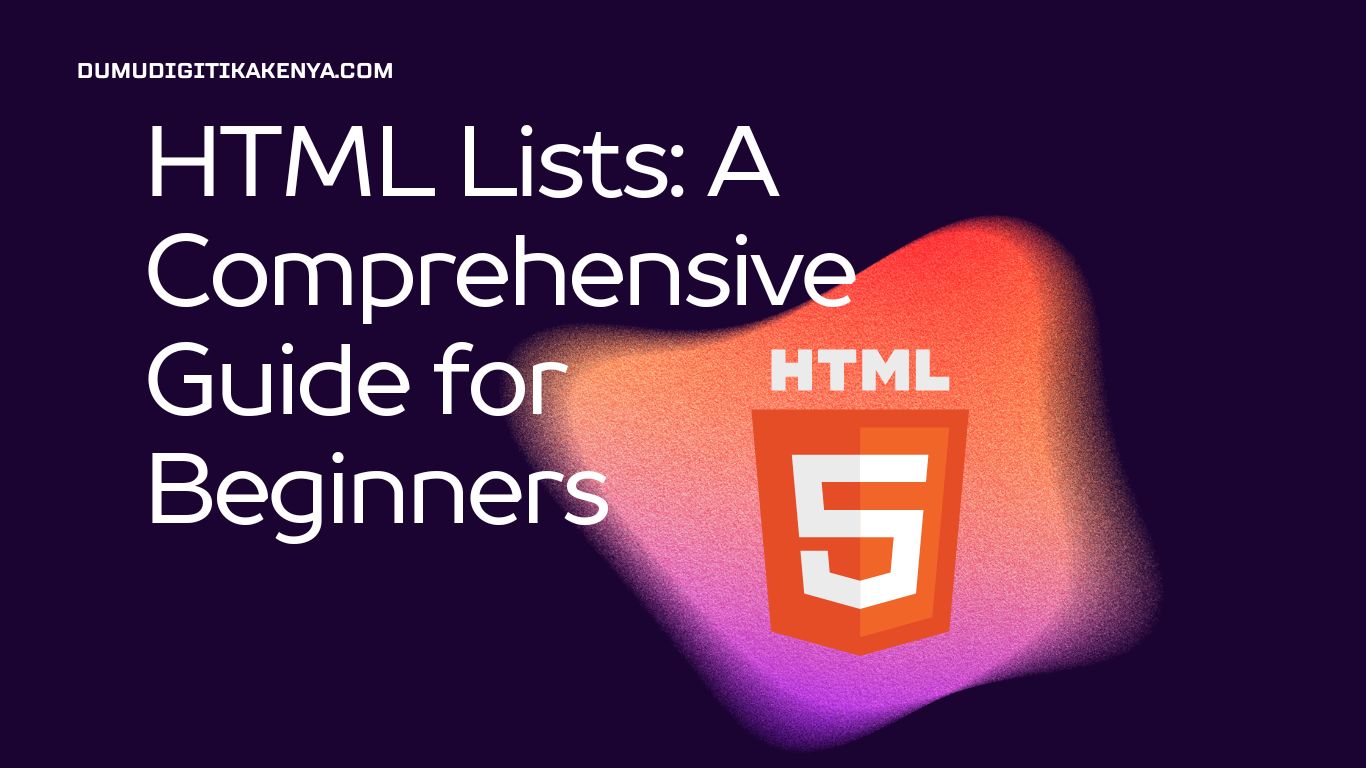Introduction To HTML List
Welcome to our comprehensive HTML Lists Tutorial! If you’re new to the world of web development and programming, understanding HTML and how to use lists effectively is a crucial first step. HTML Lists are the cornerstone of well-structured web content, providing a way to organize and present information in an easy-to-follow format. In this tutorial, we will delve deep into the world of HTML lists, covering ordered lists (ol), unordered lists (ul), and definition lists (dl). By the end of this guide, you’ll have a solid grasp of how to create and manipulate lists in HTML, setting a strong foundation for your web development journey.
HTML Lists are not only essential for structuring web content but also play a pivotal role in enhancing user experience. Ordered lists help maintain a logical sequence, unordered lists provide a visually appealing way to present items, and definition lists are perfect for term and definition pairs. As we progress through this tutorial, we’ll not only explain the syntax and usage of these list types but also demonstrate them with sample code and outputs. Whether you’re a beginner or looking to refresh your HTML skills, this tutorial will equip you with the knowledge and skills necessary to leverage HTML lists effectively in your web projects.
So, let’s dive right in and explore the world of HTML Lists. By the end of this tutorial, you’ll be well-prepared to create organized, user-friendly web content that engages and informs your audience.

Table of Contents
Understanding HTML Lists
HTML lists are used to display information in a structured format. Lists help organize content, making it easier for users to comprehend and navigate. There are three main types of lists in HTML:
- Ordered Lists (ol): Ordered lists are used when you want to present a list of items in a specific sequence or order. Each item in an ordered list is preceded by a number or letter to indicate its position.
- Unordered Lists (ul): Unordered lists are used for presenting a list of items in no particular order. Each item in an unordered list is typically preceded by a bullet point.
- Definition Lists (dl): Definition lists are used to display a list of terms and their corresponding definitions. They consist of a series of term-description pairs.
Now, let’s dive into each type of list and learn how to implement them in HTML.
Ordered Lists (ol)
Ordered lists are created using the <ol> element. Each list item is defined using the <li> (list item) element. Here’s a basic example:
<ol>
<li>Item 1</li>
<li>Item 2</li>
<li>Item 3</li>
</ol>Output:
- Item 1
- Item 2
- Item 3
In the code above, we’ve created an ordered list with three items. The numbers are automatically generated, indicating the order of the items.
Unordered Lists (ul)
Unordered lists are created using the <ul> element, and list items are defined using <li> elements. Here’s an example:
<ul>
<li>Apple</li>
<li>Orange</li>
<li>Banana</li>
</ul>Output:
- Apple
- Orange
- Banana
In this code, we’ve created an unordered list of fruits. Each item is preceded by a bullet point by default.
Definition Lists (dl)
Definition lists are created using the <dl> element. They consist of term (defined using <dt>) and description (defined using <dd>) pairs. Here’s an example:
<dl>
<dt>HTML</dt>
<dd>Hypertext Markup Language</dd>
<dt>CSS</dt>
<dd>Cascading Style Sheets</dd>
</dl>Output:
HTML
- Hypertext Markup Language
CSS - Cascading Style Sheets
In this example, we’ve created a definition list with terms and their corresponding definitions.
Nesting Lists
HTML allows you to nest lists inside one another to create more complex structures. For example, you can nest an ordered list within an unordered list or vice versa. Here’s an example of a nested list:
<ul>
<li>Fruits</li>
<ul>
<li>Apple</li>
<li>Orange</li>
<li>Banana</li>
</ul>
<li>Vegetables</li>
<ul>
<li>Carrot</li>
<li>Broccoli</li>
<li>Tomato</li>
</ul>
</ul>Output:
- Fruits
- Apple
- Orange
- Banana
- Vegetables
- Carrot
- Broccoli
- Tomato
In this example, we have an unordered list of food categories (Fruits and Vegetables), and each category contains a nested unordered list of items.
Conclusion
In conclusion, this HTML Lists Tutorial has provided you with a solid foundation in the essential art of using lists in HTML. Understanding and mastering the three primary list types—ordered, unordered, and definition lists—is a pivotal skill for any budding web developer. Lists not only make your web content more organized but also enhance the overall user experience, making it easier for visitors to navigate and comprehend your information.
By following the step-by-step instructions and examples provided in this tutorial, you now have the tools to create structured and user-friendly web content. Whether you’re building a personal blog, a business website, or a complex web application, HTML lists will undoubtedly become a staple in your coding toolkit. Remember to keep practicing and experimenting with different list structures to refine your skills further.
As you continue your journey in web development, remember that HTML is just the beginning. There are many more exciting technologies and languages to explore, but your understanding of HTML lists will always remain a fundamental and valuable skill. We hope this tutorial has been a valuable resource for you, and we encourage you to explore further and continue building your expertise in the fascinating world of web development. Thank you for joining us on this HTML Lists Tutorial journey!




